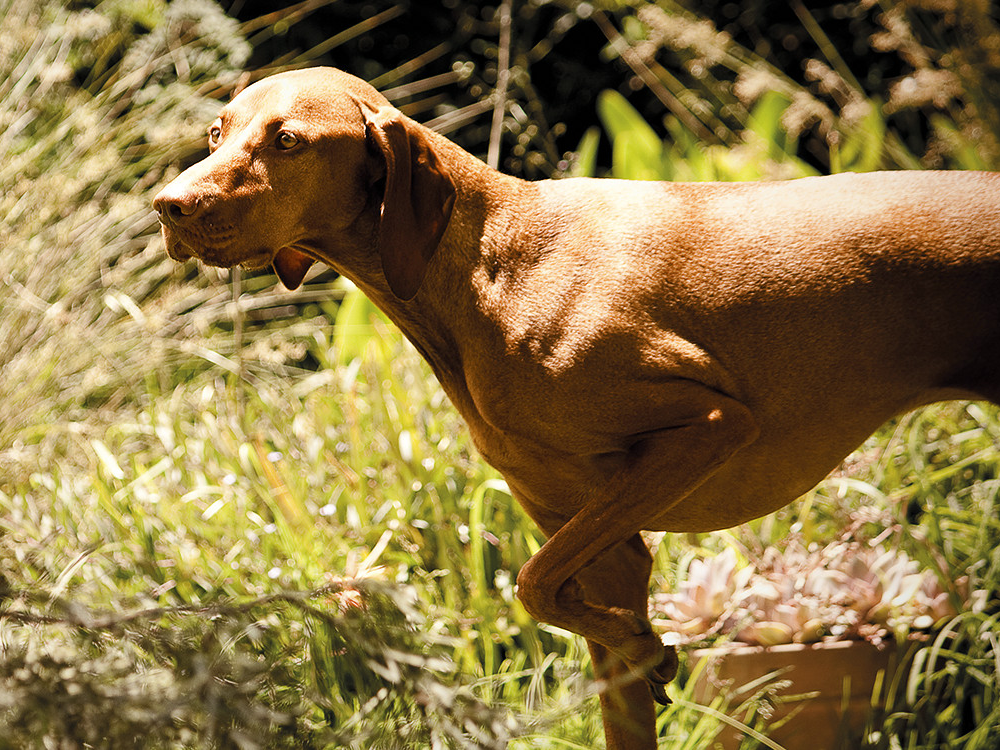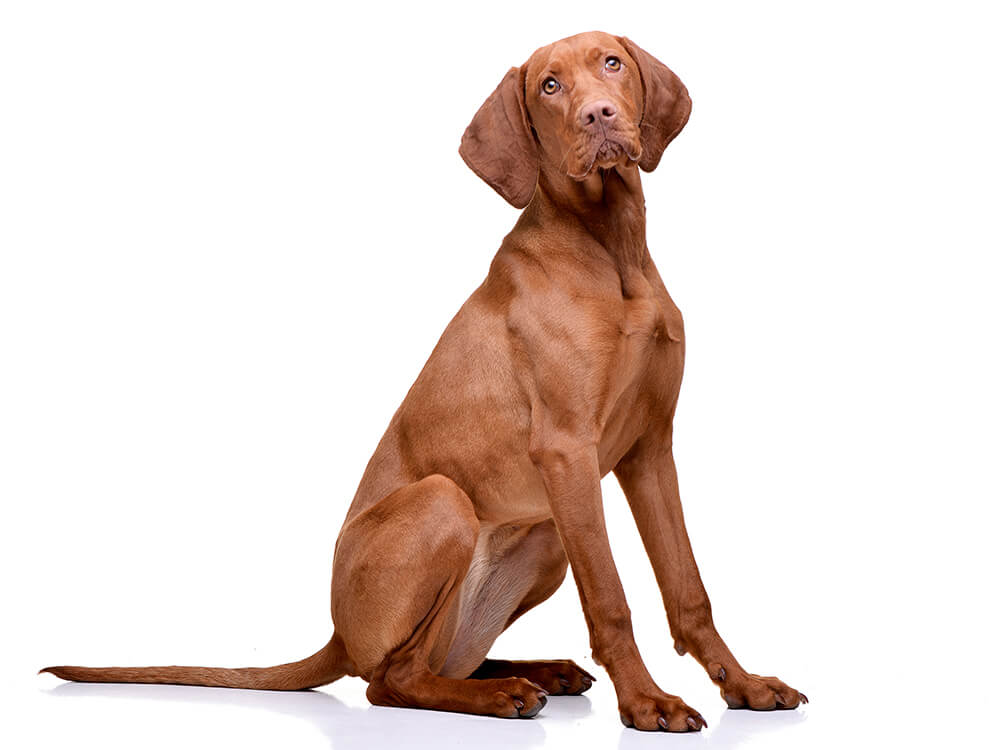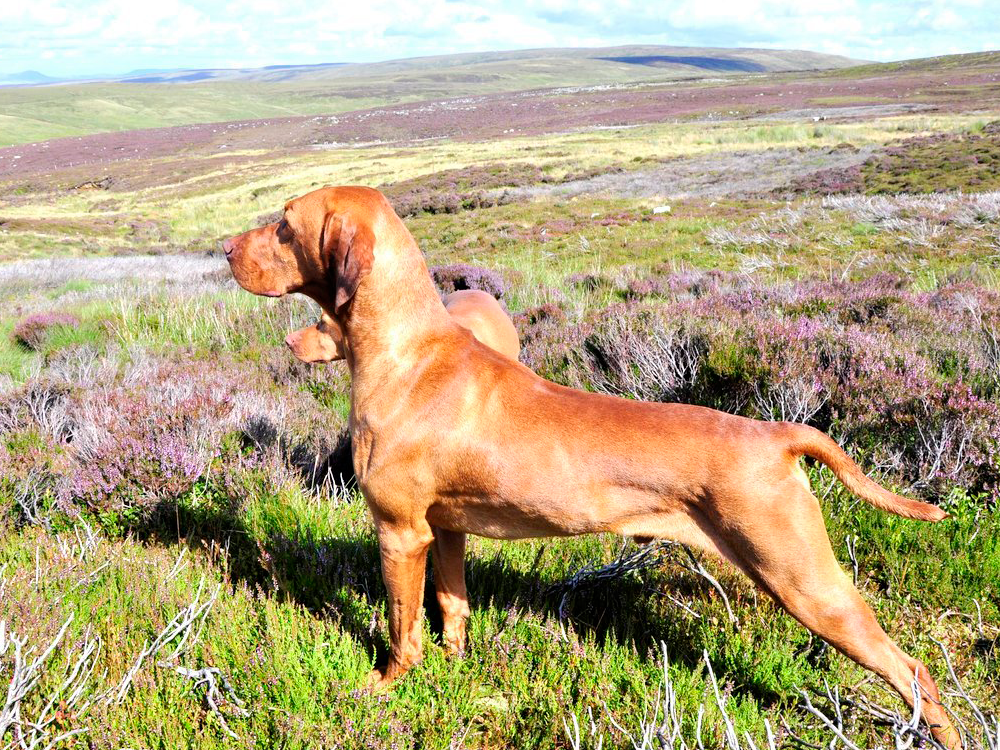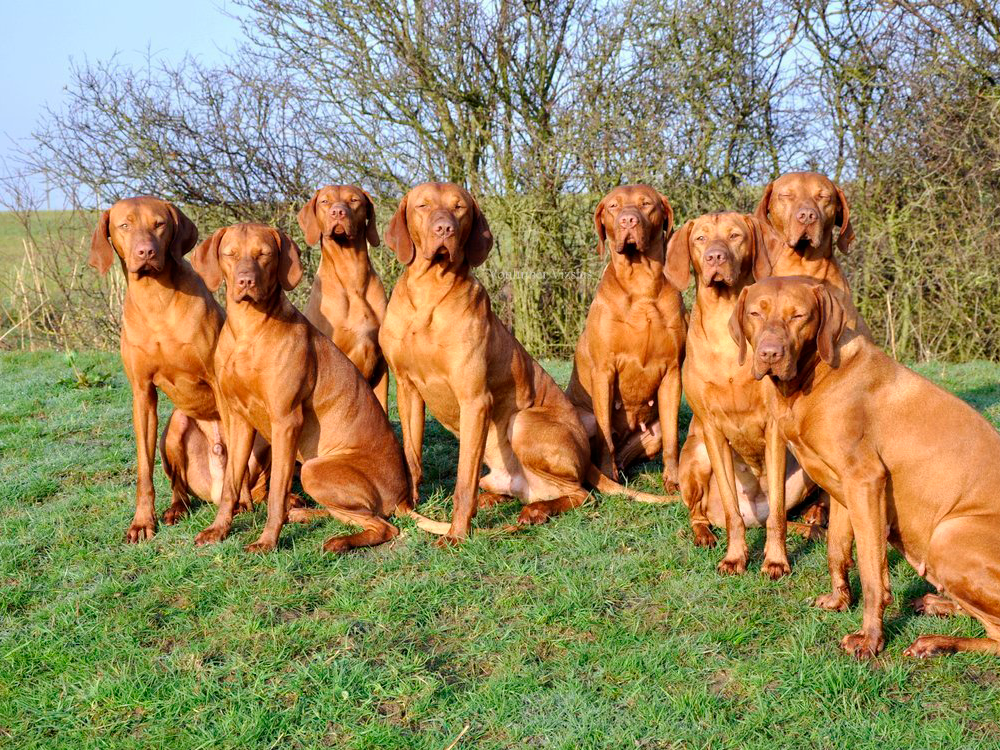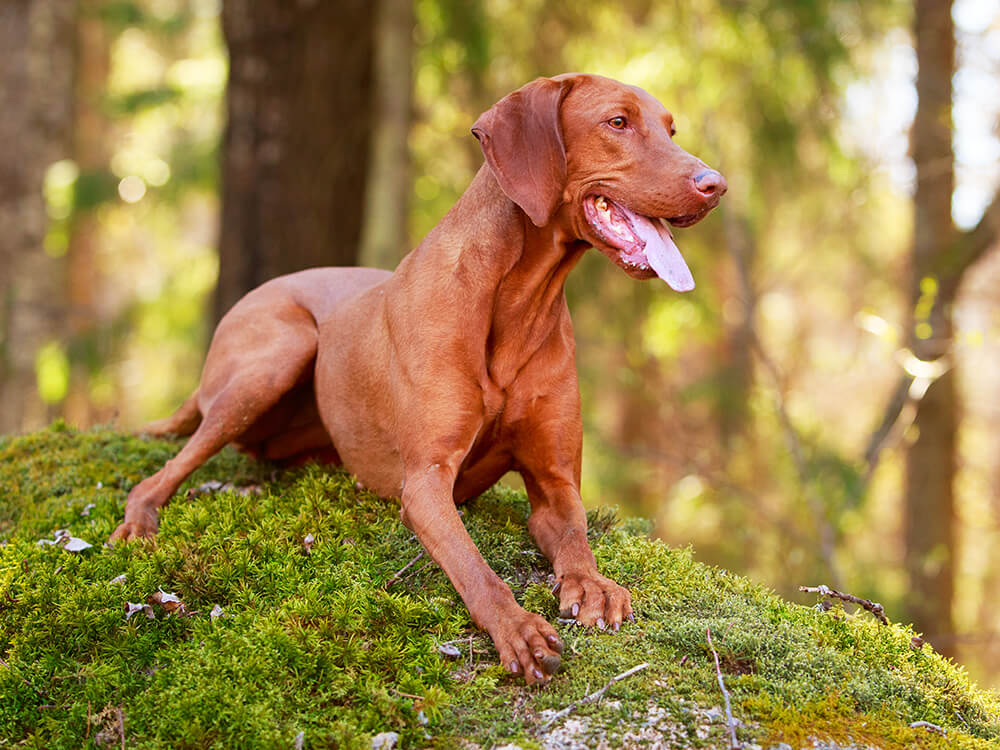
Hungarian Vizsla Breed Pictures
Vital Breed Stats
| Height: | 56 - 66 cm M | 51 - 61 cm F |
| Weight: | 20 - 27 kg M | 18 - 25 kg F |
| Breed Group: | Gundog Dog Group |
| Life Expectancy: | 11 - 14 years |
| KC Registered: | No |
Breed Characteristics
| Size: |  |
| Grooming: |  |
| Exercise Level: |  |
| Trainability: |  |
| Barking Level: |  |
| Good with Children: |  |
| Good with other pets: |  |
| Affectionate: |  |
| Protective: |  |
| Cost to Keep: |  |
Give a thumbs up if you love the Hungarian Vizsla

0
More About the Breed
History
The origins of the Hungarian Vizsla are difficult to trace but is believed to have existed since the 9th century when Magyar tribes came to settle in the Carpathian Basin, now known as Hungary. The Magyar tribes (coming from the Steppes of Asia) brought with them their hunting and herding dogs that evolved into what we know as the Hungarian Vizsla today.
For centuries, Hungarian Vizslas were bred and developed for the sporting nobility of Hungary. They were mainly utilised to scent and search birds that were netted or caught by falcons. However, when the use of firearms was introduced in the 1700s, the Hungarian Vizsla was required to be an all-around pointer and retriever dog for both fur and feathered animals. Vizslas were required to be fast with excellent nose to hunt deer, wild boar and even wolves.
During the 20th century, after the First and Second World War and the Russian invasion and occupation in Hungary, the number of Hungarian Vizslas dwindled. The breed survived when most Hungarian Vizsla owners fled to Europe and the West, where it became an established breed. It was also in this period where there was a growing number of Hungarian Vizsla in majority of the households in Hungary that the Vizsla became the country's national dog. The breed is KC registered.
Appearance
The Hungarian Vizsla is a medium-sized sporting breed that appears slim, sleek and sophisticated. It weighs 45 to 65 pounds and stands 53 to 64 centimetres at the withers. Its head is well-proportioned and looks noble, with moderately wide, slightly dome-shaped skull. It also sports a moderate stop, with a well-developed nose with wide nostrils. The nose must be the same colour as its coat, the muzzle is blunt, and the jaws are well-muscled. Its lips are tight with no pendulous flews, as opposed to most hound dogs. It has oval-shaped eyes that are medium in size, with colours harmonising with its coat colour and nose, often dark as possible.
The Hungarian Vizsla is compact and muscular with a strong and solid back, tight and straight. Its loins are short, broad and muscular, also slight arched or straight. The chest is deep and well-muscled and moderately arched as well. Its coat is short, dense and must be coarse and hard to touch. The coat should cover the whole body with a less coat on the underside of the belly. The Vizsla sports no undercoat. Acceptable coat colours include russet gold and dark sandy gold. Red, brownish and other light colours are not desirable or acceptable.
Grooming
Temperament
Intelligence
Training Vizslas is easy as they are natural people-pleasers and always want to be around people. It does not hurt that they are also intelligent and quick learners. Regardless if you are an inexperienced dog owner, the Hungarian Vizsla can be a good choice for you provided that you have the time to make sure it is given tons of mental and physical stimulations. It is a high-energy dog that requires its daily dose of exercise if not, it may develop serious behavioural issues and become destructive.
Given the proper socialisation and training, the Hungarian Vizsla is gentle around children and is always up to play interactive games whether indoors or outdoors. However, like in any dogs, it is best to make sure that interaction between children and dogs are well supervised to avoid any accidents. The Hungarian Vizsla gets along well with other dogs, especially since it was bred to work in packs. However, cats and other small animals will need to be introduced when the Vizsla is still young. Still, care must be observed when the Vizsla is around small animals.
Nutrition
- Senior and less active: up to 1,250 calories daily
- Typical adults: up to 1,410 calories daily
- Physically active/working dogs: up to 1,565 calories daily
Feeding
Health
Exercise
Cost of Ownership
There are certain financial challenges when one decides to own a dog, especially an active, medium-sized dog like the Hungarian Vizsla. However, nothing is too difficult when one is prepared. There are tons of expenses to consider when you buy a Hungarian Vizsla puppy. However, we will only cover the basics.
Here is an overview of the basic expenses:
- Puppy price - £600 to £3,000 (depends on the quality of the breed)
- Food and treats - £50 to £60 a month
- Initial equipment and supplies - £250 (one-off)
- Pet Insurance - £50 to £70 a month
- Routine veterinary check-ups - £1,000 a year
Is a Hungarian Vizsla Right for You?
- The Hungarian Vizsla is a gentle, loyal and affectionate gundog.
- It is a highly attached dog breed, fondly called "Velcro Vizsla" since it sticks by your side like velcro.
- It is highly energetic, which means it also has high exercise needs.
- It is a self-cleaning dog, with no doggy smell, which means it is low maintenance on the grooming front.
- It is the best choice for inexperienced dog owners, provided that they can keep up with its exercise requirement.
- It is territorial and will bark at strangers invading its pack space; this temperament makes it an ideal guard dog.






